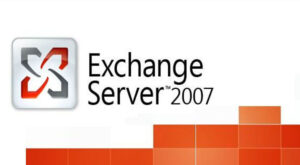
As we navigate through the Microsoft’s .NET Framework 2.0 emerges as a beacon of innovation, offering developers a comprehensive, consistent programming model for building applications that have visually stunning user experiences, seamless and secure communication, and the ability to model a range of business processes. At the heart of this development platform are the user libraries—pre-built code collections that serve as the building blocks for robust application development. Let’s explore some of the most common user libraries in .NET Framework 2.0 and their pivotal roles in modern software development.
System.Windows.Forms This library is the cornerstone of .NET’s graphical user interface (GUI) capabilities. It provides classes for creating windows, dialogs, and the controls that reside within them. With System.Windows.Forms, developers can construct rich, client-side applications. The ease of drag-and-drop control placement within the Visual Studio integrated development environment (IDE) has revolutionized the way desktop applications are built.
System.Data Data is the lifeblood of any substantial business application, and System.Data is the conduit through which .NET applications communicate with databases. This library is crucial for any developer needing to perform data access operations. It includes the ADO.NET architecture, which provides consistent access to data sources such as SQL Server and XML, and facilitates the manipulation of data and data schema.
System.Drawing A library that gives developers the ability to work with graphics in a detailed manner. From drawing shapes and text to handling images and creating dynamic visual content, System.Drawing is integral for enhancing the visual aspect of applications. It’s the .NET bridge to GDI+, the Windows graphics subsystem, enabling high-quality two-dimensional graphics, rendering, and printing.
System.Web This is the library that extends the .NET Framework to the web. It contains classes and interfaces that enable developers to build web applications or services that adhere to the HTTP/HTTPS protocols. The System.Web namespace includes the essential components for ASP.NET Web Forms applications, which are the backbone of dynamic, data-driven sites built with .NET 2.0.
System.Xml With XML being a universal format for structured documents and data on the web, the System.Xml library provides standards-based support for processing XML. It includes classes for XML manipulation such as reading, writing, and validating XML documents. It’s a vital library for any networked application that communicates using XML, whether it’s for configuration files, data storage, or web services.
System.Security In an age where security is paramount, the System.Security namespace contains classes that control access to operations and resources based on policy and permissions. It’s a critical library for enforcing security mechanisms in .NET applications, allowing developers to create safer and more reliable code.
System.Configuration This library simplifies how developers interact with the configuration settings of an application. It provides easy access to the configuration files of .NET applications for reading, writing, and managing application settings—making applications adaptable to different environments and scenarios.
Conclusion .NET Framework 2.0, with its array of user libraries, has set a new standard for the ease and speed of application development. By providing these powerful, ready-to-use libraries, .NET empowers developers to focus on creating innovative, efficient applications without getting bogged down in the minutiae of boilerplate code. These common libraries not only provide the foundation upon which .NET applications are built but also encapsulate a level of reliability and sophistication that has become synonymous with modern software solutions. As we embrace these technological advancements, we pave the way for a future where possibilities are limited only by our imagination.



